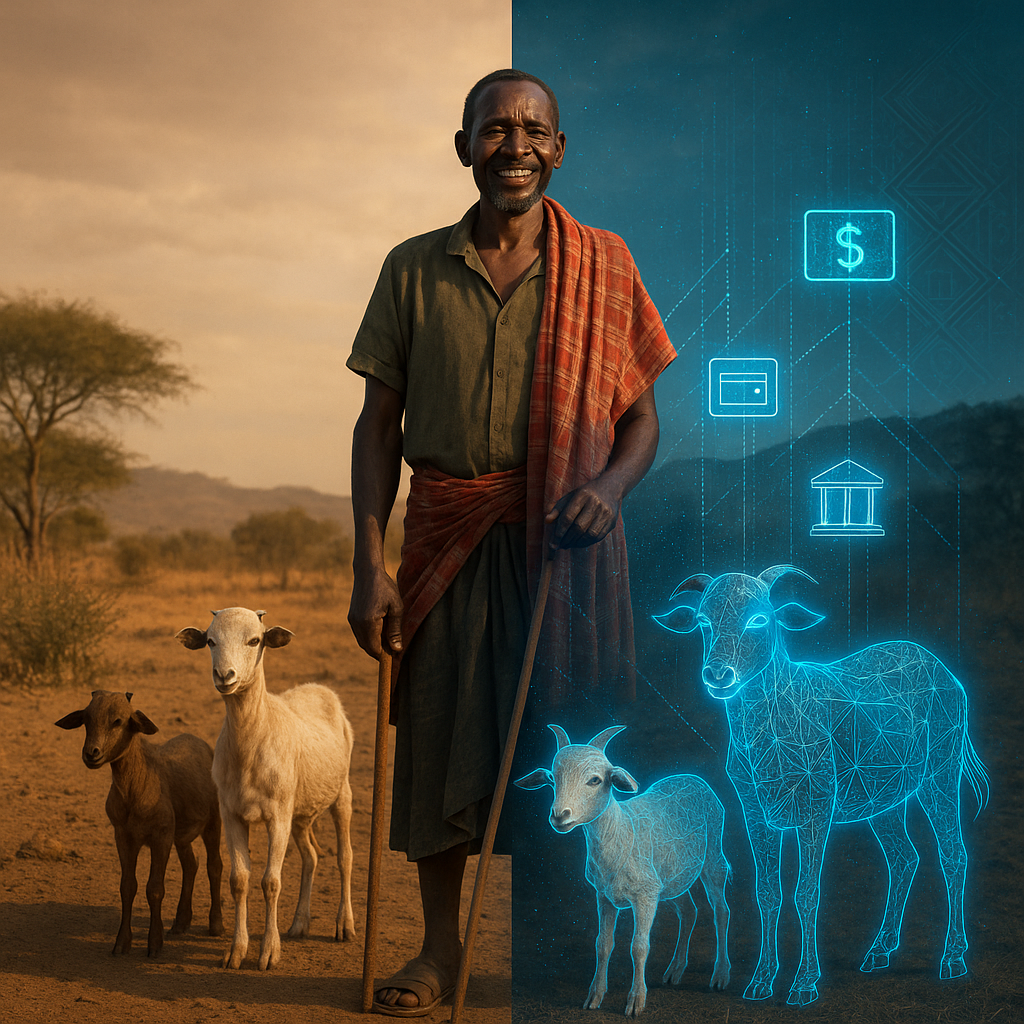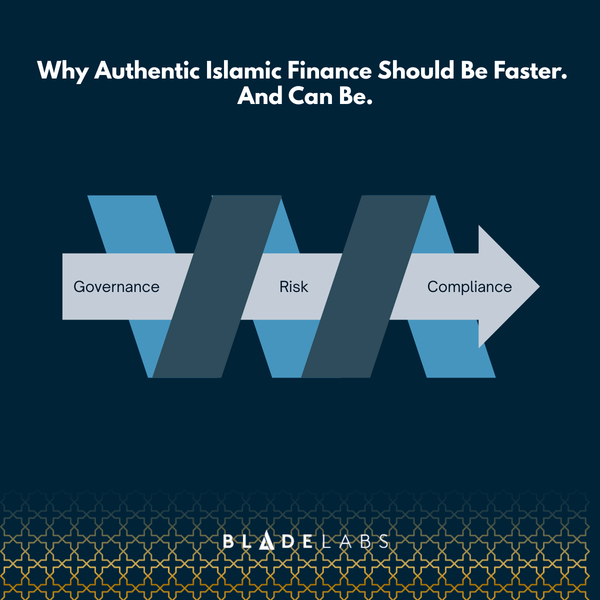Beyond Buzzwords: The Real Financial Inclusion Challenge

In the race to achieve the United Nations Sustainable Development Goals (SDGs) by 2030, we've created enough PowerPoint slides about financial inclusion to circle the globe twice. Yet 1.7 billion adults remain stubbornly unbanked. The uncomfortable truth? Our industry's obsession with smartphone apps and sleek interfaces has largely missed the fundamental barrier to inclusion: not technology access, but financial identity itself.
Financial inclusion isn't just another fintech vertical – it's the infrastructure through which at least seven SDGs become achievable:
- SDG 1 (No Poverty): Financial services enable income smoothing and emergency resilience
- SDG 2 (Zero Hunger): Agricultural finance supports increased food production and security
- SDG 5 (Gender Equality): Digital financial services reduce barriers for women's economic participation
- SDG 8 (Decent Work): Payment systems facilitate entrepreneurship and market access
- SDG 9 (Innovation): Financial infrastructure powers broader economic development
- SDG 10 (Reduced Inequalities): Inclusive finance narrows economic disparities
- SDG 17 (Partnerships): Digital financial platforms create multi-stakeholder collaboration
The Asset Paradox: Wealthy on Paper, Poor in Practice
While the fintech world obsesses over smartphone apps and chatbots, the real revolution in financial inclusion lies in reimagining what constitutes "financial identity" itself. Our study of livestock farmers across emerging markets revealed something counterintuitive: the path to financial inclusion doesn't start with banking the unbanked – it starts by recognizing the unrecognized wealth that already exists.
Approximately 600 million people worldwide rely on livestock for their livelihoods, collectively holding billions in assets that remain financially "invisible." These aren't poor communities in the traditional sense – they're asset-rich but liquidity-poor, wealth-stranded by financial systems that can't see what's right in front of them.
This isn't just an academic observation. When a goat herder in rural Kenya can't use his $10,000 worth of livestock as collateral for a $500 loan to purchase drought-resistant seeds, we're not witnessing a failure of technology but a failure of imagination in how we define and verify value.
When Standard Financial Models Meet Non-Standard Lives
Traditional risk assessment excludes billions through a cruel irony: you need a financial history to get financial services, but you need financial services to build a financial history. For agricultural producers, this challenge is compounded by irregular income cycles inherent to farming.
Most fintech solutions barely scratch the surface of this problem, offering marginally better interfaces to fundamentally flawed systems. True innovation means developing verification methods that recognize value in contexts where conventional financial logic fails.
What Traditional Lenders See: Unreliable income, no credit history, high risk
What Actually Exists: Predictable seasonal patterns, community accountability networks, and substantial physical assets
The key insight we've gained from our Digital Cattle Pilot research isn't just technological – it's philosophical. When we shifted from asking "How do we bring these people into our financial system?" to "How do we adapt financial systems to recognize the economic reality these communities already operate in?", entirely new solution spaces emerged.
Asset Verification: The Missing Link
For marginalized communities, the critical barrier to financial inclusion isn't a lack of assets but the inability to verify and track those assets within formal systems. Our work revealed three principles crucial to breakthrough innovation in asset verification:
- Immutability Without Complexity: Documentation systems must be tamper-resistant yet simple enough for low-literacy environments.
- Community-Based Verification Networks: Centralizing trust doesn't work in decentralized contexts.
- Progressive Identity Building: Financial identity isn't binary but progressive. Each successfully tracked asset transaction adds another layer of verifiable history, gradually building financial credibility.
This approach creates what we call "asset-first identity" – a financial identity built not from formal documentation or banking history but from the verifiable assets people already possess and trade.
Ethical Finance: The Framework We've Been Missing
Among the most promising approaches to financial inclusion are those that incorporate ethical finance principles that naturally align with the needs of vulnerable communities. While conventional financing often creates problematic incentive structures in uncertain environments like agriculture, we've observed four specific advantages of Islamic finance principles that transcend religious contexts:
- Structural Risk-Sharing: When the financing party assumes real business risk alongside the entrepreneur, incentives align naturally.
- Asset-Backed Reality: When financing must tie to real economic activity rather than speculative opportunities, communities gain stabilizing infrastructure rather than extraction mechanisms.
- Uncertainty Management: The prohibition of excessive uncertainty (gharar) in Islamic finance creates transparency requirements that protect vulnerable borrowers from predatory fine print.
- Value-Aligned Capital: Ethical investment guidelines naturally restrict exploitative or harmful activities while encouraging sustainable development.
In practice, these principles create a fundamentally different approach to capital that addresses many shortcomings of conventional interest-based systems. For agricultural communities facing irregular income cycles and climate uncertainty, such approaches offer particular advantages:
- Seasonal Accommodation: Financial obligations align with natural production cycles
- Shock Resilience: Risk-sharing distributes the impact of droughts or disease outbreaks
- Development Focus: Long-term partnership arrangements support gradual productivity improvements
- Asset Preservation: Even during hardship, essential productive assets remain available
Establishing Trust Before Technology: While technological capability is important, our research suggests that establishing trust frameworks through community leaders before introducing new verification technology will be essential for adoption.
Simplicity Over Comprehensiveness: We anticipate that a focused, iterative approach—deploying one feature at a time rather than comprehensive solutions—will allow for better adaptation to local needs and more sustainable adoption.
Relevance Over Abstract Education: Rather than extensive educational programs teaching abstract financial concepts, embedding learning within immediately relevant transactions appears more likely to foster genuine financial capability.
Designing for Intermittent Connectivity: In agricultural contexts, solutions that can function offline and sync when connectivity returns will be necessary to ensure consistent service in areas with limited infrastructure.
Ethical Frameworks for Practical Alignment: Financial structures based on ethical finance principles show promise for better alignment with agricultural realities than conventional approaches that weren't designed for these contexts.
Actionable Takeaways for Implementation
For organizations looking to create meaningful financial inclusion impact through digital innovation, our experience suggests these priorities:
- Verify Before Banking: Focus first on creating verifiable financial identities through asset documentation before introducing complex financial products.
- Engage Local Trust Networks: Work through existing community structures rather than attempting to create parallel verification systems.
- Deploy Ethical Finance Models: Consider how risk-sharing, asset-backed approaches might create more resilient financial relationships, especially in volatile contexts.
- Build Progressive Complexity: Start with simple, high-value use cases and add features only after establishing usage patterns.
- Design for Real Conditions: Test solutions in actual field conditions, including intermittent connectivity, instead of designing for ideal scenarios.
From Digital Divide to Digital Dividend
The convergence of digital innovation with ethical finance principles represents a historic opportunity to transform financial inclusion from aspiration to achievement. By leveraging technological capabilities to address long-standing barriers, we can create financial systems that serve everyone – not just those already advantaged by geography or circumstance.
The coming decade will determine whether this potential translates into impact at scale. By thoughtfully applying digital innovations within ethical frameworks, we can close financial inclusion gaps and accelerate progress across multiple SDGs simultaneously, turning the digital divide into a digital dividend for sustainable development.
In a world obsessed with disruption, perhaps the most revolutionary act is simply recognizing the economic value that already exists in communities we've systematically ignored.


